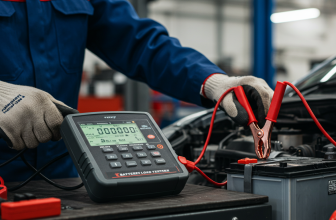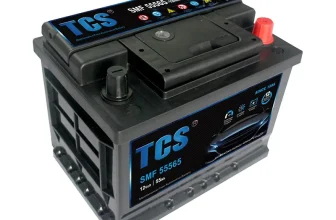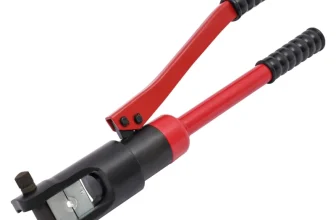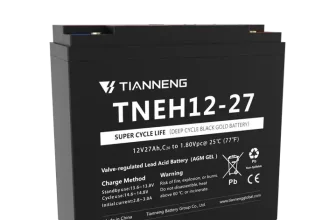Drone batteries are the lifeblood of unmanned aerial vehicles (UAVs).
They provide the power that enables drones to operate and carry out a
variety of tasks, ranging from aerial photography to crop monitoring and
disaster relief. The importance of these batteries cannot be overstated.
Without them, drones would be unable to fly or complete their designated
functions. Batteries define the drone’s flight time, power output, and
overall operational efficiency. As such, understanding the types of
batteries used in drones, their capabilities, and their limitations is
critical for anyone involved in the operation or design of these
remarkable machines.
Explanation
of the role of batteries in drone’s performance
Batteries play an essential role in the performance of drones, acting
as the primary power source for not only movement but also other
functionalities such as cameras, sensors, and flight control systems.
The quality and type of battery a drone utilizes directly impacts its
overall performance. For instance, diverse factors like how long the
drone can stay in the air (flight time), the distance it can cover
(range), and how much load it can carry (payload) are all influenced by
the battery. Furthermore, the type of battery also affects the pace at
which the drone discharges energy, which subsequently determines its
speed and agility. In essence, selecting the correct battery is as
crucial as choosing the drone itself, as it significantly influences a
drone’s capabilities and performance.
Understanding Drones
Brief background on
drones and their usage
Drones, also known as unmanned aerial vehicles (UAVs), have steadily
gained prominence over the past few years due to their wide array of
applications. These remote-controlled machines were initially developed
for military operations to eliminate the risk to human lives. However,
their usage has expanded beyond military applications to include other
fields such as photography, media, agriculture, infrastructural
inspections, deliveries, and more.
The appeal of drones lies in their capability to reach areas or
accomplish tasks that are challenging for humans. For instance, drones
are commonly used for aerial photography, providing spectacular views
once only achievable using helicopters – a much more expensive and less
versatile option. In agriculture, drones serve a crucial role through
precision agriculture techniques, enabling farmers to monitor crop
growth and manage their lands more effectively. In the realm of
deliveries, companies like Amazon are experimenting with drone
technology to provide faster and more efficient delivery services.
Regardless of their usage, the heart and soul of these drones, much
like any electrical device, is the battery. The battery affects the
drone’s flight time, range, speed, and overall performance, making it a
critical component irrespective of drone’s application. Whether flying
for fun or deploying for a specific task, the efficiency and
dependability of the drone largely depend on the type and quality of the
battery used.
Connection
between drone’s batteries and its functionality
The functionality of a drone is deeply intertwined with the type and
quality of the battery it utilizes. The battery serves as the drone’s
powerhouse, dictating how long and far the drone can operate.
Essentially, without the battery, the drone is rendered
non-functional.
The battery also influences the drone’s performance in terms of speed
and agility. Larger, more powerful batteries could potentially enable
drones to reach higher speeds, but also add weight which may compromise
maneuverability. Conversely, lighter batteries might enhance a drone’s
agility but reduce its operating time or speed.
In addition, certain advanced features of drones such as automatic
return home functions, GPS tracking, and camera usage are heavily
dependent on the battery’s power and efficiency. More energy-demanding
features may drain the battery faster, shortening the flight time.
Also, it’s worth noting the amount of time it takes a battery to
recharge can impact a drone’s functionality. Some batteries take longer
to recharge than others, which may result in longer downtime between
flights.
In conclusion, the battery is not just a power source for a drone. It
plays a far more nuanced role impacting flight time, speed,
maneuverability, the usability of features, and even the time between
flights. So, understanding the deep-seated connection between a drone’s
battery and its functionality is essential in maximizing the use of
drones and even choosing which drone is ideal for one’s specific
needs.
Types of Drone Batteries
Lithium Polymer (LiPo)
Batteries
Definition and detailed
explanation
Lithium Polymer (LiPo) batteries are a prevalent type of battery used
in drone technology. Distinguished by their pouch-like packaging, LiPo
batteries are essentially rechargeable cells composed of lithium-ion and
a polymer electrolyte – a gelled compound rich in lithium salt. This
polymer electrolyte replaces the more standard porous separator used in
other batteries and allows ions to move from the negative to positive
electrodes as the battery discharges.
LiPo batteries stand out due to their lightweight characteristics and
their ability to package in a variety of sizes and shapes, enhancing
their adaptability to drone designs. They possess a high energy density
and discharge capacity, critical attributes in drone operations that
demand high power output. This type of battery operates on low cell
resistance, allowing for rapid energy discharge and hence high
performance.
An essential feature of LiPo batteries is the cell count, symbolized
as ‘S.’ For instance, a 3S battery indicates it has three cells
connected in series. A higher ‘S’ count implies a higher voltage, which
translates to more power for the drone. Looking after LiPo battery usage
is key, which is why drone operators keep a close eye on ‘C’ ratings,
which signify the maximum safe continuous discharge rate of a LiPo
battery.
However, despite their high performance, LiPo batteries also demand
careful handling and maintenance. They can be prone to puffing up or
even exploding if not managed correctly, primarily due to overcharging,
over-discharging, or being punctured. All in all, the impressive
features of LiPo batteries underscore their popularity as a power source
in the drone industry.
Benefits and limitations
Lithium Polymer (LiPo) batteries come with a host of benefits that
make them an ideal power source for drones. Firstly, they are
lightweight, which is vital for airborne gadgets. Their lightness helps
to maximize drone flight times without hampering maneuverability.
Secondly, they have a high energy density, which means they can store
more energy than other batteries of the same size, extending a drone’s
flight duration. Lastly, they can handle high discharge rates, necessary
for drones that need rapid and intense power delivery for acrobatic
stunts or high-speed flying.
However, LiPo batteries also have several limitations that one should
carefully consider. For starters, they require meticulous care and
handling. Mishandling or improper usage can lead to dangerous
consequences, including fire. They can also puff up and become unusable
if overcharged or discharged too much. Moreover, LiPo batteries have a
comparatively shorter lifespan, typically lasting around 300-400 cycles
depending on the level of care. And, LiPo batteries can be quite
expensive as compared to other battery types. Finally, they should be
stored in a particular state of charge to avoid damage, adding to
maintenance needs.
Nickel–Metal Hydride (NiMh)
Batteries
Definition and detailed
explanation
Nickel–Metal Hydride (NiMh) batteries are rechargeable batteries that
use a nickel oxide hydroxide as the positive electrode and a metal
hydride as their negative electrode. Their operation relies on a type of
electrochemical reaction that results in the production of electrical
energy.
These batteries were introduced as a safer and more environmentally
friendly alternative to Nickel–Cadmium (NiCd) batteries, as they contain
no heavy metals, which can be harmful.
NiMh batteries have a voltage of 1.2 volts per cell, similar to that
of NiCd batteries, but what sets them apart is their higher capacity.
This makes them an excellent choice for devices like drones, which
require a lot of power for prolonged periods.
When in use, energy is released via a chemical reaction within the
battery’s cells. As it discharges, the positive electrode is reduced
while the negative electrode is oxidized, enabling it to generate
power.
These batteries can be charged and discharged hundreds of times
without significant capacity loss. However, NiMh batteries have a
notorious ‘memory effect’, a phenomenon where repeated partial
discharge/charge cycles can cause the battery to ‘forget’ its full
capacity, reducing the amount of energy it can store and deliver.
However, this issue has been minimized in the latest versions of NiMh
batteries.
Thus, though not as common in drones as LiPo batteries, NiMh
batteries are still a viable choice for certain drone models,
particularly those designed for extended use and durability. Despite
their larger size and weight compared to other battery types, their high
capacity and long life cycle make them a worthwhile option to consider
for drone enthusiasts.
Benefits and limitations
NiMH batteries come with a unique set of advantages and drawbacks
that can shape your drone experience significantly.
On the positive side, NiMH batteries are relatively safe and easy to
handle. They pose less of a fire risk compared to LiPo batteries, making
them a safer alternative for amateur drone enthusiasts. Further, they do
not require a balance charger, simplifying the charging process. Unlike
LiPo batteries, you can also store NiMH batteries in any state of charge
without causing potential damage to the cells. They’re also more
resilient to overcharging and show minimal performance degradation with
frequent recharges.
However, NiMH batteries also exhibit some limitations. They are
heavier compared to their LiPo counterparts of the same size, which can
negatively impact a drone’s flight time and agility. Moreover, they
offer a lower energy density, meaning that for the same volume or
weight, NiMH batteries store less energy than LiPo batteries. This
results in shorter flight times. NiMH batteries also tend to experience
the “memory effect,” where they lose their maximum energy capacity if
they are repeatedly recharged before being fully discharged.
Therefore, while NiMH batteries may be a suitable choice for
beginners due to their safety profile, those seeking longer flight times
and high performance may find them to be less efficient.
Lithium-Ion Batteries
Definition and detailed
explanation
Lithium-Ion batteries, also commonly referred to as Li-ion, are
widely used power sources not just for drones but also for many other
electronic devices like laptops, phones, and electric vehicles. The
essential components include lithium and carbon, hence the name
Lithium-ion.
How does it work? The simplest explanation is that during charging,
the lithium ions move from the positive electrode to the negative one,
storing power. Once unplugged, the cycle is reversed, releasing stored
power by pushing the lithium ions back to the positive electrode, thus
providing energy to the drone to power its flight.
They’re a popular choice because of their remarkable energy density,
or the amount of energy they can hold relative to their size, which is
superior to many other types of batteries. With the size and weight of
the battery being a crucial consideration in drone technology, it makes
the Lithium-Ion battery an attractive option. Furthermore, they have a
low self-discharge rate, meaning they can retain most of their charge
when not in use. This extends the overall battery life, allowing for
more operational time before recharging is needed.
One unique feature of Lithium-Ion batteries is that they are designed
with an internal smart circuit. This helps in providing the necessary
safety measures and controls the charging process to prevent
overcharging or overheating, which could potentially lead to damaging
the battery permanently.
Benefits and limitations
Lithium-Ion batteries are widely recognized and used in a variety of
devices due to their illustrious benefits. One of the most notable
advantages of these batteries is their high energy density. This means
they can store a considerable amount of power without being excessively
heavy or large, a feature that is crucial for drones where weight and
size directly impact performance.
They also have a lower rate of self-discharge. Once charged, a
Lithium-Ion battery maintains its charge much longer compared to other
types of batteries, allowing drones to be used for extended periods.
Additionally, Lithium-Ion batteries can handle numerous charge/discharge
cycles before their performance drops, thereby offering a longer
lifespan.
Despite these benefits, Lithium-Ion batteries also have certain
limitations. One of the main drawbacks is their sensitivity to high
temperatures. Exposure to high heat can degrade the battery, impairing
its function and overall lifespan. These batteries also age regardless
of whether they are being used, and this natural wear and tear process
can reduce their efficiency over time.
Another limitation is their cost. Lithium-Ion batteries are more
expensive than their Nickel-Metal Hydride (NiMh) counterparts. This
could raise the overall cost of maintaining the drone if frequent
battery replacements are required. Lastly, they have a built-in
protection circuit to prevent the battery from overcharging, which could
add to their weight. If this circuit fails, there can be a risk of
overheating or even explosions.
In conclusion, while Lithium-Ion batteries offer several benefits
such as high energy density and a low self-discharge rate, they also
present certain drawbacks with their sensitivity to temperature, aging
process and relatively high cost. Hence, one must consider their
specific needs and circumstances when opting for Lithium-Ion batteries
for drones.
Factors to
Consider When Choosing Drone Batteries
Capacity
Capacity is one of the most critical features to consider when
selecting a drone battery. Measured in milliamp hours (mAh), the
capacity refers to how much power the battery can hold. Essentially, the
higher the capacity in mAh, the longer the drone’s flight time. While a
high-capacity battery may sound ideal, keep in mind that with increased
capacity comes increased size and weight, which can affect the drone’s
flight performance. Therefore, it’s crucial to strike a balance between
selecting a battery with high capacity to extend flight time and
ensuring the battery doesn’t negatively impact the drone’s
performance.
Discharge rate
The discharge rate, also known as the ‘C’ rate, is another crucial
aspect to consider while choosing a drone battery. The discharge rate
refers to the speed at which a drone battery depletes its charge. For
example, a 1C battery will use up all of its capacity in one hour, while
a 2C battery will use it up in half an hour, and so on.
The appropriate discharge rate is necessary for drones as it
determines the power that can be supplied at once to the drone. If you
have a battery with a low discharge rate, your drone might underperform
because it’s not getting enough power. In contrast, a high discharge
rate will allow your drone to perform fast maneuvers and aggressive
flights because of the high power provision in less time.
However, it’s important to note that a very high discharge rate can
potentially damage your drone’s motors, and a very low rate might not be
sufficient for your actions. Hence, a balance is needed, and knowing
your drone’s specifications properly will help you determine the optimum
‘C’ rate for your drone’s battery.
Voltage
Voltage is a critical factor to consider while selecting a battery
for your drone. Essentially, voltage is the measure of the force of
electricity moving through the battery, and in drones, it directly
affects the power and speed at which the drone can operate. Most
small-to-medium-sized drones operate on 7.4V (2-cell or 2S) and 11.1V
(3-cell or 3S) batteries. Some of the more advanced drones that require
greater power can operate on 14.8V (4-cell or 4S) or even 22.2V (6-cell
or 6S) batteries.
However, it is not always the case that higher voltage is better.
More voltage means more power, but it also translates to a higher
current draw, which can reduce the lifespan of the motor if it’s not
rated for that voltage. Hence, it is important to pair your drone with a
battery that delivers appropriate voltage. One easy way is to check the
drone manufacturer’s recommendation as they always mention what voltage
the drone motors are designed to handle. This ensures your drone
operates optimally and minimizes the risk of damage due to overvoltage.
Remember, always follow the manufacturer’s guidelines regarding voltage
to prevent any potential harm to your drone.
Battery Life
Battery life is a critical factor to consider when selecting a drone
battery. It refers to the amount of time a drone can operate before the
battery needs to be recharged. Battery life can be influenced by the
drone’s design, weight, weather conditions, and how the drone is used.
For instance, high-speed flights and heavy loads can drain the battery
faster.
Manufacturers often provide an estimate of a battery’s flight time,
but real-world conditions might result in shorter flight times.
Therefore, it’s wise to carry several backup batteries for extended
drone operations.
Remember, over time, batteries degrade, meaning their capacity to
hold charge decreases. This results in reduced flight times. Therefore,
it’s essential to understand your drone’s battery life to plan your
operations effectively and ensure its longevity.
An extended battery life can provide longer flight times, ensuring
you are able to capture more footage or travel greater distances. On the
flip side, batteries with longer lifespan may be more hefty in weight or
larger in size. You’ll need to strike a balance between the battery life
and the drone’s ability to carry the weight.
In conclusion, when choosing a drone battery, opting for one with a
longer battery life can afford greater flexibility, but the trade-offs
in weight, size, and cost should also be considered. Always keep extra
batteries handy to ensure uninterrupted drone operation.
Price
The price of a drone battery is a significant factor to consider when
making a selection. Often, price directly correlates to the quality of
the battery, as well as its specifications. High-performance batteries,
such as those with large capacities or high discharge rates, tend to be
more expensive. However, purchasing a high-quality battery can be viewed
as a sound long-term investment, as it will typically have a longer
lifespan and provide consistent performance over time.
On the other hand, cheaper batteries might seem enticing,
particularly for beginners. Yet they often need to be replaced more
frequently, adding to their overall cost over time. Furthermore, poor
quality batteries may lead to poor drone performance, and in the worst
scenario, they might even damage the drone.
While it’s crucial to consider your budget when choosing a drone
battery, it’s equally important to consider the quality and performance
you’re getting for that price. Sourcing batteries from reputable
manufacturers or sellers can often provide a balance between cost and
quality. Remember, a good battery contributes significantly to the
overall efficiency and reliability of your drone.
Conclusion
Recap of information
about drone batteries
In the course of this article, we have explored the various types of
batteries used by drones and their distinctive features. Drones largely
use Lithium Polymer (LiPo), Nickel-Metal Hydride (NiMh), and Lithium-Ion
batteries. Each of these battery types has its unique characteristics,
benefits, and limitations that tremendously influence the performance of
the drone.
Remember, when choosing the right battery for your drone, you must
consider several factors like capacity, discharge rate, voltage, battery
life, and, not to forget, price. All in all, understanding drone
batteries and choosing the right one contributes significantly to the
effectiveness and efficiency of your drone.
Final
thoughts and insights on selecting the right battery
Selecting the right battery for your drone is a crucial decision that
directly impacts performance. The battery type not only determines
flight time, but also affects the drone’s weight and overall
functionality. Each type of batteries—Lithium Polymer (LiPo),
Nickel-Metal Hydride (NiMh), and Lithium-Ion—present their own unique
set of advantages and limitations. Therefore, factors such as capacity,
discharge rate, voltage, battery life, and price should be meticulously
considered. Remember, an efficient battery will optimize the drone’s
performance, enhance flight experience, and even prolong the drone’s
lifespan. So, don’t rush the decision-making process—make a
well-informed choice based on your specific needs and the drone’s
requirements.







